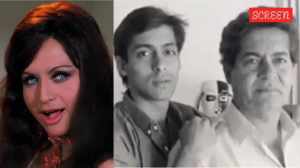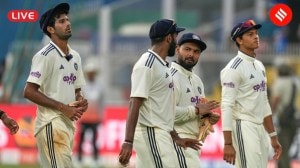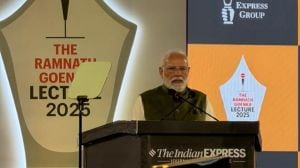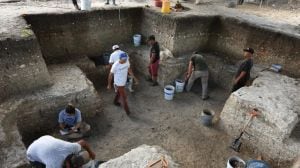AIIMS doctors perform rare surgery, remove limbs of 17-yr-old’s parasitic twin: Why this is a breakthrough procedure for conjoined twins
Teen from UP among 40 such cases reported globally
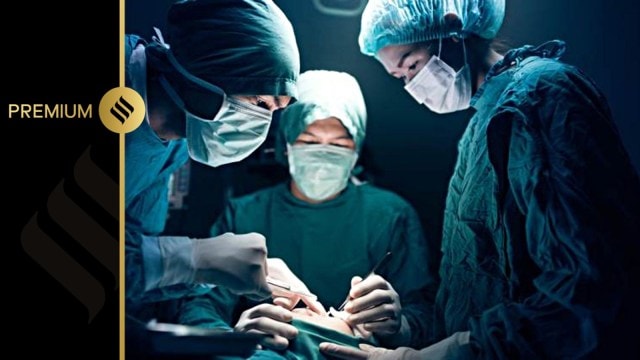 According to Dr Asuri Krishna, additional professor of surgery who led the specialist team and conducted the two-and-a-half hour surgery on February 8, the 17-year-old was a rare case, only one of 40 such cases reported globally. (Representational Photo)
According to Dr Asuri Krishna, additional professor of surgery who led the specialist team and conducted the two-and-a-half hour surgery on February 8, the 17-year-old was a rare case, only one of 40 such cases reported globally. (Representational Photo)For all his 17 years, this teen boy from Unnao in Uttar Pradesh, lived with the unwanted attention and the disparaging comments that came with his condition – a pair of extra legs that belonged to his underdeveloped twin and jutted out of his torso. Now, surgeons at the All-India Institute of Medical Sciences (AIIMS), Delhi, have managed to remove the remnants of his parasitic twin through a “rarest of rare” surgery and given him a chance to live the way he always wanted to.
Though he cannot regain his lost childhood, the boy, a class VIII dropout, is thinking of rejoining school and living as a normal adult. “I couldn’t travel anywhere or do any physical activity. Now a new world has opened before me. I hope to study and get a job,” he told The Indian Express.
WHY THIS IS A BREAKTHROUGH SURGERY
According to Dr Asuri Krishna, additional professor of surgery who led the specialist team and conducted the two-and-a-half hour surgery on February 8, the 17-year-old was a rare case, only one of 40 such cases reported globally. “This surgery is being seen as a breakthrough as this involved conjoined twins with complexities. While the boy was fully formed, he was joined to his incomplete parasitic twin. Sometimes, one twin doesn’t fully develop, leading to what’s called an asymmetrical or parasitic twin. In these cases, one twin (the autosite) is more developed, while the other (the parasite) depends on the autosite for survival with partially developed body parts. These cases can vary widely in how they appear,” he says. In this case, only the lower limbs, the buttocks and external genitalia of his twin were formed and were attached to his abdomen. Conjoined twins are very rare, occurring in about 1 in 50,000 to 100,000 births.
A SURGICAL CHALLENGE
The biggest challenge for surgeons was separating shared tissues. The surgery involved an intricate separation of not only a mesh of blood vessels and nerves but also tissue separation close to the chest wall, bowels and liver. What complicated matters was that the extra limbs were not just stubs. These included underdeveloped male genitalia, grew in size with age, keeping pace with the boy’s normal development. “He could also sense touch, pain, and temperature in the parasitic limb. Apart from a dull ache in his abdomen and flanks, he had normal bowel and bladder function, ate regularly, and had no other major health issues,” says Dr Krishna.
“We performed a CT angiography to assess the blood supply to the parasitic limb and found that it was supplied by a branch of the internal mammary artery, which usually supplies the chest wall. This made the situation more challenging. A large cystic mass was also found in his abdomen during the CT scan” says radiologist Dr Ankita Agarwal.
 Dr Asuri Krishna, who led the team that conducted the surgery, makes a presentation at AIIMS, Delhi, Tuesday. (Express Photo by Ankita Upadhya)
Dr Asuri Krishna, who led the team that conducted the surgery, makes a presentation at AIIMS, Delhi, Tuesday. (Express Photo by Ankita Upadhya)
The surgery was done in two parts. The first part involved removing the parasitic limb. The surgeons made a circular incision around the base of the limb where it was attached to his chest. “They carefully cut through the skin and tissue, identified and tied the blood vessels supplying the limb and separated the bony attachment. The underdeveloped testes of the parasitic twin were found in the soft tissue at the attachment site, and the limb was completely removed,” says Dr Krishna.
The second part of the surgery involved removing the large cystic mass in the boy’s abdomen, nudging it off the abdominal wall, bowel, and liver. Once freed, the mass was completely removed. Then doctors realised that his bladder was extended unusually high, up to the belly button. So they tied that up as well and placed a drain, which was removed on the third day after surgery.
A NEW LIFE
The teen recovered quickly after the surgery, eating food the first day after the operation. His vital signs remained stable and he was discharged on the fourth day. Dr Manish Singhal, HOD, Department of Plastic, Reconstructive and Burn Surgery, says the surgery was life-transforming as he faced significant social challenges due to his condition. “People often misunderstood him, and he felt isolated, spending much of his childhood alone. He consulted local doctors, but they told him that removing the limb could be fatal because it shared a common heart with him. As a result, he continued to live with the limb. He also struggled with schooling and had to drop out in class VIII, unable to return to school since then,” he says.
The AIIMS specialist team included Dr Krishna (chief operating surgeon), Dr VK Bansal, Dr Sushant Soren, Dr Brijesh Kumar Singh, Dr. Abhinav Kumar, Dr Jaymeen Makwana from the Department of Surgical Disciplines, Dr Singhal and Dr Sashank from plastic surgery, Dr Ganga Prasad and Dr Rakesh from anesthesia, and Dr Atin and Dr Agarwal from the radiology department.





- 01
- 02
- 03
- 04
- 05










